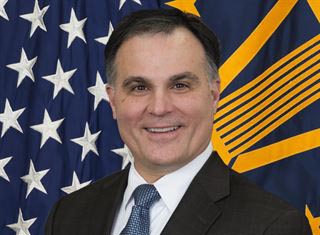
Former DHS deputy CTO to promote federal IT change from outside in
Rob Palmer, who left DHS late last year and now is an executive vice president and CTO of ShorePoint, said lessons during his decade in government will help shape...
Rob Palmer spent 10 years working inside the Homeland Security Department trying to affect change not only in the agency but across government.
Palmer, who recently left DHS after spending the last 18 months as its deputy chief technology officer, joined a cybersecurity start-up called ShorePoint after feeling like he hit the proverbial wall in government.
Now, as executive vice president and CTO of ShorePoint, Palmer said one of his goals is to improve the rate of success for federal programs from the outside.

“Too often we do planning, but they are not aligned to budgets and not driven down through the operational goals. To sum it up, it’s the alignment of activities,” Palmer said during an exit interview on Ask the CIO. “Where it might happen in your operations office where you get line of sight through operational objectives, but it doesn’t work across those compartments so your chief information security officer and operational folks may not be aligned in terms of their strategic objectives and the budgets that goes along with that. In terms of federal IT process to be more effective, that needs to change.”
Palmer, who also worked at the Transportation Security Administration and ran the DHS enterprise systems development office, said changing federal IT must come from improving processes and enforcing it day-to-day.
He said that is where ShorePoint’s team of cyber experts can help. ShorePoint will offer consulting services around visibility, context and analytics to public and private sector companies to improve cyber processes.
“There are some fundamental and foundational ways the federal apparatus works, and some are not unlike other corporate structures where leaders are incentivized in certain ways. You see this across the federal structure as well as in industry,” he said. “But then barriers are thrown up which lead to inefficiencies and agencies end up not focusing on the challenge together. I believe it’s not because people don’t want to work across those lines, but it’s really because they are not incentivized to do that. As a CISO you have responsibilities for what is in your lane, and the operational person has a different set of equities. If they meet then great, but if not, then there are inefficiencies. They need to meet more often to work hand-in-hand to make sure one bigger goal is delivered in the most secure manner possible.”
Palmer said his experience with the Mobile Tiger Team and the team that worked on the digital government strategy proved that bringing people together from across the government was critical to the success of the initiatives and created lasting relationships.
“Those relationships are still paying dividends today,” Palmer said. “It showed when all of us come together, we can make progress pretty quickly. Once we set that initial foundation, which was a little before its time, now we see the implementation of mobile and digital efforts. While implementation is lagging a bit, it’s not because of desire, but because of how long it takes to move inside the federal government.”
Palmer said the usual barriers didn’t come up and the groups focused on solving the problem by working across government and with industry.
And it’s because of these examples that Palmer holds out a lot of hope that agencies will continue to improve their IT processes.
Palmer said he would start looking at how to further get rid of all the manual processes in government.
“We are not doing enough with automation. I think the software has evolved to the point where there are capabilities that we can’t duplicate in manual processes and just accept the fact that the software can do it better. There are plenty of places to start small,” he said. “Another one I’m exploring—I know it’s a controversial topic—but I really do have some passion around is really around how executives are incentivized in the federal space. I think some of it systematically leads to misplaced focus so I think there are some opportunities to tweak the way all federal employees are incentivized.”
Most of all, Palmer said in-person collaboration is the best way to change the way agencies address IT challenges.
Copyright © 2025 Federal News Network. All rights reserved. This website is not intended for users located within the European Economic Area.
Jason Miller is executive editor of Federal News Network and directs news coverage on the people, policy and programs of the federal government.
Follow @jmillerWFED





